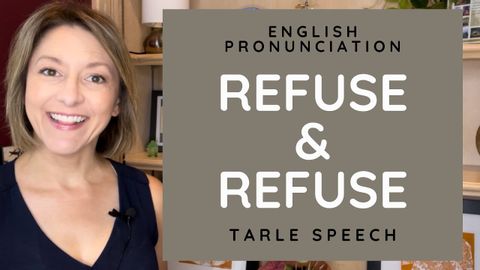
Subtitles & vocabulary
How to Pronounce REFUSE & REFUSE - American English Heteronym Pronunciation Lesson
00
Summer posted on 2022/10/11Save
Video vocabulary
pronunciation
US /prəˌnʌnsiˈeʃən/
・
UK /prəˌnʌnsiˈeɪʃn/
- Noun (Countable/Uncountable)
- How a word is said; how a word sounds
- The manner in which someone utters a word.
B1
More flip
US /flɪp/
・
UK /flɪp/
- Verb (Transitive/Intransitive)
- To turn your body in the air, as in gymnastics
- To move into a different position quickly
- Noun
- Act of turning your body in the air; somersault
- Movement of something from one position to another
B2
More Use Energy
Unlock All Vocabulary
Unlock pronunciation, explanations, and filters
